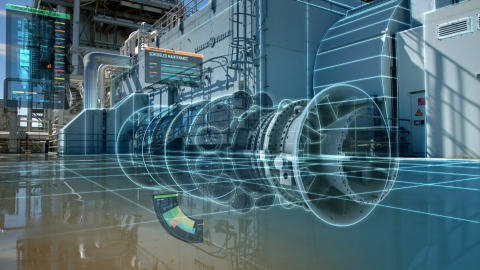
Modeling system applied in the factory
With the exception of manufacturers of precision mechanical equipment, most manufacturers in other fields are often not interested in the idea of creating products from digital twin technology (Digital Twin). Packaging businesses are also one of them.
Tronrud Engineering, a Norwegian business, decided to make a new breakthrough for the packaging industry. Faced with many of the same problems as other parts manufacturers around the world – their customers want more flexibility and the equipment delivered is cheaper and faster. Trornud has found a solution to these problems: Digital twin technology (DT).
In fact, the launch of the latest packaging equipment incorporating DT technology has helped Trornud in particular and the food industry in general open a new field of innovation. The device can print up to 300 packaging cartons and pack them in a box within 1 minute, with 10% less raw material than the usual and the company reduces the test run by 25%.
Without the help of technology, all successes would not have been possible. In particular, the combination of computer-assisted 3D designs and simulation software created models for machines.
Digital twins are virtual models of a product or physical process. In manufacturing, this modeling can be a dynamic virtual representation of the entire plant or can focus on an area, like a machine.
At Tronrud, they are building a new packaging machine that works at twice the speed of the current model and can handle all product changes quickly in the same area. The machine has evolved from pneumatic to fully electric, and that means there will be fundamental changes in the way it is designed to provide a fast, compact system that can handle all kinds of different packaging. And, of course, it must be fully tested with what Tronrud has done with a digital model using Siemens technology, including NX Mechatronics Concept Designer (MCD), an integrated system engineering software. interdisciplinary, Simatic S7-PLCSIM Advanced – enables realistic simulation of controllers without real hardware and Totally Integrated Automation (TIA), a digital framework for mechanical and electrical design and automation engineering To test and identify errors before putting them into actual operation.
Testing the functionality of the machine on the modeling software is a drastic change in the way most OEMs test the design of a machine, by building a physical model of its own. But when the system error occurs, the cost to fix it is quite expensive. Colm Gavin, an auto sales specialist at a factory in Siemens, talked about the twin technology in a presentation at PACK EXPO Las Vegas: “The cost of a problem with a faulty system is often will increase 10x compared to when you go from one level of value added to another. But if you’re sitting at a desk and working with a CAD and you notice an error system, the quick fix is cheap.”
The application of twin technologies to production activities is said to bring many benefits. If OEMs do not continue to focus on the application and development of this modeling system in their factories, their success will be very slow.
Productivity and Quality Office